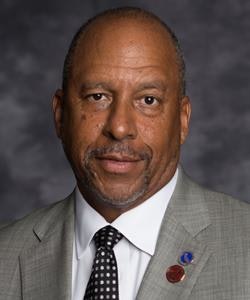Since the 2015 launch of Graduation Initiative 2025, a state-backed project to improve graduation rates, the California State University system (CSU) has made significant progress, with students from all groups earning degrees at higher rates. But disparities persist. The graduation rate gap between Black and white students is 22.2 percentage points, .3 of a percent higher than it was fifteen years ago. Black student enrollment and persistence have declined in recent years as well.
Now, CSU, the nation’s largest university system, with 23 campuses and nearly 460,000 students, is making a push to close these gaps with a new report making comprehensive recommendations on how the CSU can best promote Black excellence.
The report is the product of a workgroup formed by CSU interim chancellor Dr. Jolene Koester after the system’s first Juneteenth symposium last year.
“It was an event that crystallized, for me, the CSU’s institutional, societal, and moral imperative to take meaningful action,” said Koester in a statement. “We need to create an entirely new and holistic approach for supporting Cal State’s Black community.”
The workgroup, made up of 16 administrators from across the CSU system, was led by Dr. Saúl Jiménez-Sandoval, president of Fresno State, and Dr. Thomas Parham, president of CSU Dominguez Hills. They conducted listening sessions and focus groups with more than 250 Black students, faculty, and staff. Parham said that the committee focused on making the most of its chance to affect change.
 Dr. Thomas Parham, president of CSU Dominguez Hills
Dr. Thomas Parham, president of CSU Dominguez Hills
The workgroup didn’t shy away from sweeping proposals. One would require each of the schools in the CSU system to set recruitment goals for Black students based on their representation in local regions as well as to make plans for how to achieve them. Schools that hit their goals would receive increased funding and those that don’t, would lose dollars. Another recommendation was that each school develop retention and persistence strategies for Black students using a personalized student support model, along with enhanced advising. The workgroup also suggested that each campus have Black-designed and inspired campus spaces, culturally competent mental health professionals, and campus police who have a community approach.
“I don’t think there’s nearly enough energy devoted to institutions evaluating themselves on whether they are ready to receive Black students,” said Parham. “It’s an invitation to see whether or not they’re ready to create a wholesome environment for Black students around the country. If you provide that level of support, then I think it naturally attracts students.”
The committee also suggested changes to CSU systems, including the creation of a statewide central office for the advancement of Black excellence with the resources to give grants, a data infrastructure with disaggregated information, and policies to address unprofessional conduct such as microaggressions, micro-assaults, and micro-invalidations. The workgroup also recommended a comprehensive enrollment marketing campaign aimed at Black students. This suggestion was particularly necessary, according to Dr. Christopher Nellum, executive director of the western branch of The Education Trust, an educational equity nonprofit.
“There’s some trust lost in the CSU system by Black communities in California, as evidenced by dropping enrollment and increased enrollment at HBCUs,” he said. “I think that they have some work to do to reach Black communities so that they build trust again.”
Other ideas centered on teachers. Perhaps most significantly, the committee recommended an increase in the recruitment and support of Black faculty and staff.
“[Black] instructional staff need to be seen in the classroom because they are symbols of possibility,” said Parham.
The workgroup also included a mandatory development program to help professors focus on student potential rather than their initial circumstances and a mandate that new faculty have previous success in helping diverse students. The committee suggested that Black student success be incorporated into faculty and staff evaluations, and that each school conduct a cluster hire of scholars who study issues of concern to African Americans.
The report drew praise from higher ed equity experts.
“It is monumental,” said Dr. Shaun R. Harper, a professor at the University of Southern California (USC) and founding director of the USC Race and Equity Center, describing it as the best report of its type. “The recommendations are clear, they’re achievable, [and] they’re the right recommendations. It can become a blueprint for lots of other colleges and universities across the United States who are failing to effectively recruit, retain, affirm, and graduate Black students.”
 Dr. Christopher Nellum, executive director of The Education Trust--West
Dr. Christopher Nellum, executive director of The Education Trust--West
“There isn’t a lot of talk about financial resources for students,” he said. “So much of what we hear from Black students is that the financial pressures of attending college are real. In California, to step out of your door each morning, you have to have money.”
Although the report didn’t include details about student aid, the CSU is putting money behind the report’s recommendations: $10 million over three years, an amount that Nellum described as “great,” but not enough.
“I would like to see the state invest additional money specifically for this,” he said. “They deserve more; they need more. $10 million over 23 campuses is not going to go all that far.”
Parham said that he is hoping to attract philanthropic attention for additional funds. A more immediate next step will be getting the endorsement of the CSU trustees when they meet in July, which Parham believes will happen. Then, system-wide and individual campus implementation teams can be formed with the start of the new academic year in August, and change can begin.
There’s a lot of work to do, but Parham is optimistic.
“We ought to be the model of what Black excellence looks like for public universities,” he said. “It’s time for us to get serious.”
Jon Edelman can be reached at [email protected]





















